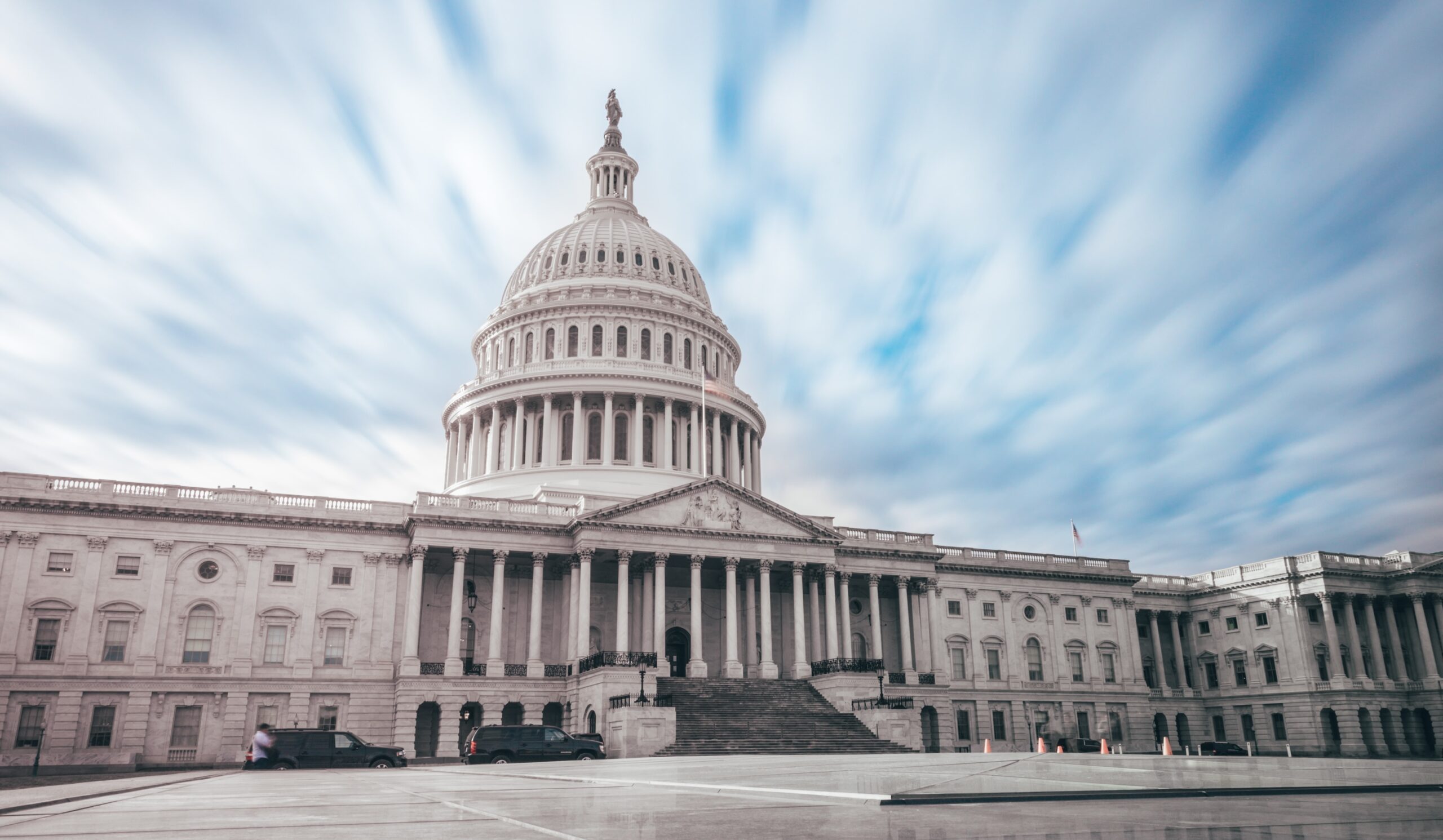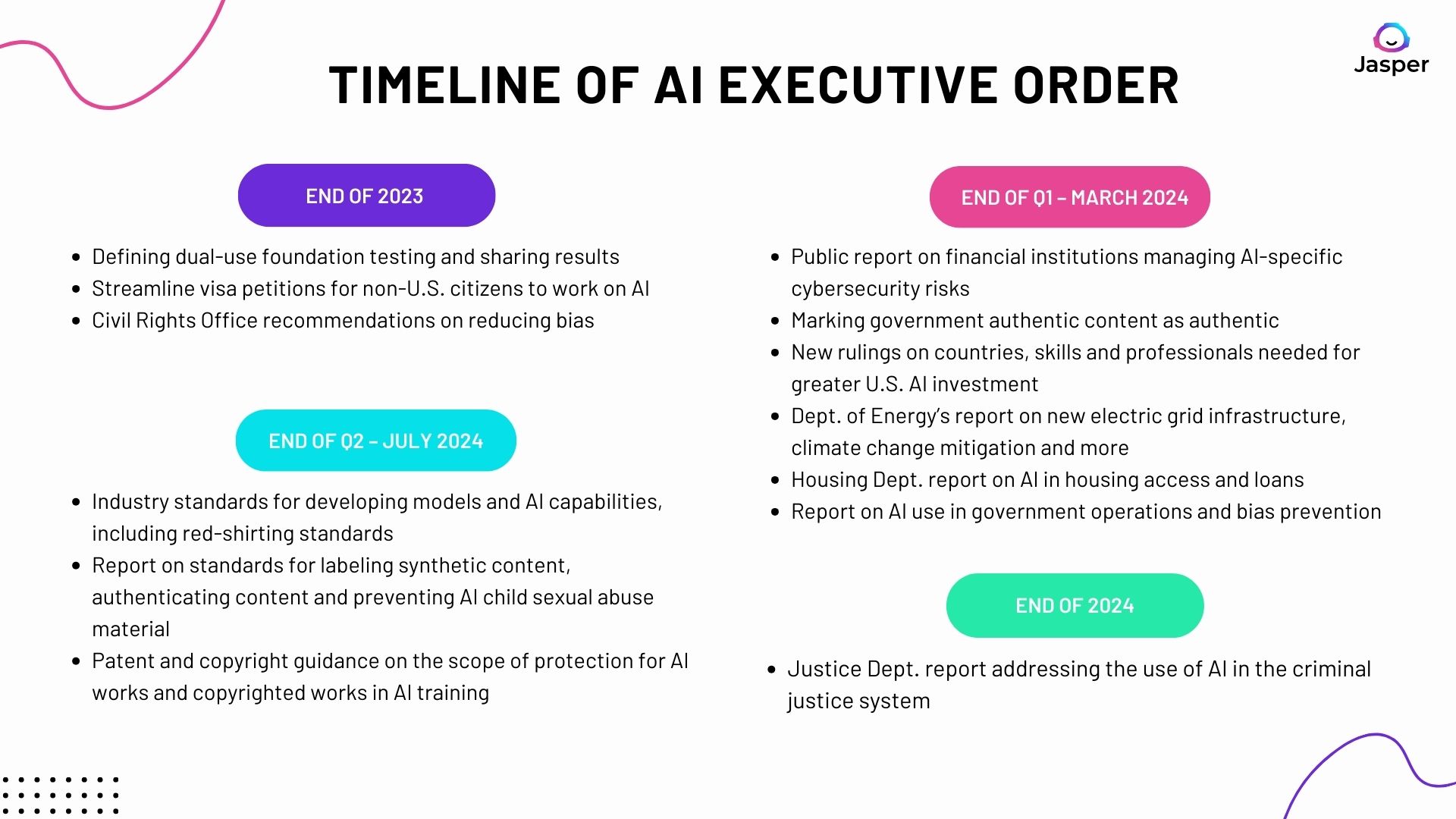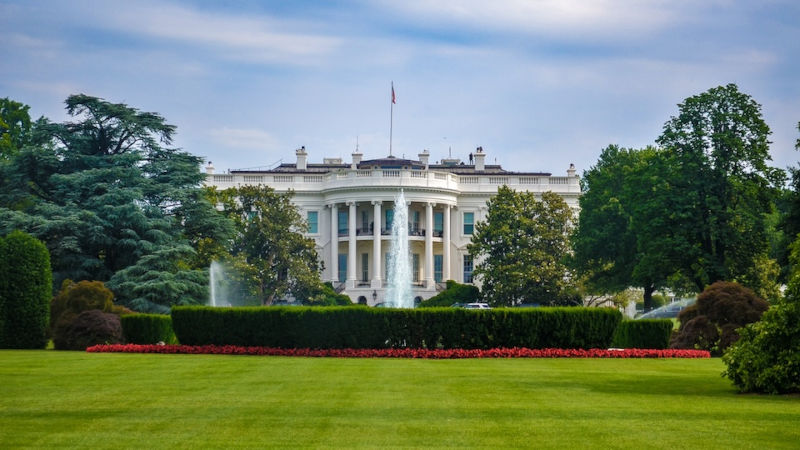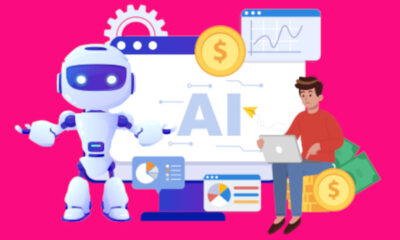Free
Understanding the White House’s AI Executive Order
From mandated government transparency to industry advancements, here are the key takeaways from the recent AI executive order and when you can expect them. Stay ahead of the curve with our comprehensive guide.
Get ready for an in-depth look at the game-changing strategic roadmap the U.S. government has laid out for AI integration and regulation. It’s a comprehensive plan that covers various areas and sets the stage for a safer and more effective AI-enabled future.
According to Cameron Kerry, former General Counsel and Acting Secretary of the U.S. Department of Commerce, the White House’s Executive Order on AI is a historic document. It’s the most detailed and expansive order of its kind in U.S. history, signaling the full commitment of the federal government to the AI revolution. A multitude of federal departments and agencies have vital roles to play in this transformative journey.
Stanford Institute for Human-Centered Artificial Intelligence, along with a team of AI experts, shares this sentiment, acknowledging the impressive scope of the order while also recognizing the challenges it presents. With over 50 federal entities involved and around 150 distinct requirements, the implementation of this order will be no small task. But the obstacles are worth overcoming, as this order represents enormous progress towards our collective vision of a safe and effective AI-powered future. Its impact on various sectors of society could be truly groundbreaking.
While the majority of the order focuses on AI use within the government, it also touches on business applications and AI development, making it relevant for everyone to understand. To make it easier to grasp, we’ve broken it down into a timeline, keeping in mind that these dates are subject to change. Use this as a rough guide to prepare for each phase of this monumental journey.
Defining Dual-Use Foundation Testing and Sharing Results
Companies working on AI models that have both civilian and military applications need to disclose information about their training processes and testing outcomes to the government. The Secretary of Commerce will outline the technical requirements for reporting, specifying which models and computing systems fall under these rules.
Ensuring the safety and accuracy of these models is crucial. That’s why teams of experts known as “red teams” test them rigorously to uncover any vulnerabilities or flaws. These red-team tests aim to identify any outputs from the models that could be harmful or biased. The National Institute of Standards and Technology will establish national standards for these tests, collaborating closely with the AI community to prioritize safety and accuracy.
The executive order also mandates reporting of test results for foundation models that use a specific level of computing power. It advises against releasing the model weights (the instructions that guide the AI’s decision-making process) beyond a certain threshold. Additionally, it requires reporting on how these weights are protected physically and digitally during training, ownership, and use.
Streamlining Visa Petitions for Non-U.S. Citizens Working on AI Projects
The government is committed to speeding up visa processes for noncitizens who want to contribute to AI projects in the U.S. This includes expanding visa opportunities for AI and emerging technology experts. The Secretary of Labor will seek public input to identify potential updates to the list of Schedule A occupations, which includes “immigrants of exceptional ability in the sciences or arts, including college and university teachers,” among others. These updates could facilitate the approval of green cards for foreign workers as part of a broader strategy to attract and retain technical talent in the country.
Exciting News! Changes to Ensure Fairness in AI and Protect Financial Systems
Hey there! We have some important updates for you regarding recent measures taken by the Attorney General and federal civil rights offices. They are working together to prevent discrimination associated with AI. How cool is that? They’re enforcing existing laws, hosting meetings, and raising awareness to address potential bias in AI use. Plus, they’re even considering providing guidance and training to investigators and prosecutors at different levels to tackle civil rights violations related to automated systems. This is a big step towards a fairer future!
Speaking of fairness, the Secretary of the Treasury will be submitting a public report on best practices for financial institutions to manage AI-specific cybersecurity risks. This is crucial to protect sensitive information and ensure the stability of the financial system. As our valued finance industry customers, we’ll keep you updated on this report. We’ll break down all the important findings, recommendations, and expected timeline for changes. Stay tuned!
While the recent executive order prompted the development of best practices, some specific areas were left unaddressed. According to Aaron Klein from the Brookings Institution, it’s surprising that financial regulators haven’t received more guidance on incorporating AI and guarding against its potential negative impacts. Incorporating AI for good could greatly enhance bank regulators’ ability to spot errors and prevent future issues. Let’s hope for more progress in this area!
Ensuring the authenticity of government content is another important aspect of these measures. The Secretary of Commerce and the Director of the Office of Management and Budget will be developing guidance on digital content authentication and synthetic content detection. Watermarking is one of the measures being considered, but there’s still work to be done to ensure its effectiveness. In the meantime, we should all be critical and fact-check the content we consume, especially as we head into the election cycle. Authenticity matters!
To attract and retain top talent in AI and other emerging technologies, the government is exploring various measures. The Secretary of State will potentially expand the visa renewal program for academic research scholars and STEM students. A new program will also be launched to attract AI talent from overseas, providing them with information about research and employment opportunities in the U.S., including visa options. In addition, immigration pathways will be modernized for experts and tech professionals in AI and other fields. This includes adjustments to the H-1B visa program and streamlining the residency process. Great news for those looking to contribute their expertise to the U.S.!

Exciting news from the Department of Energy! They’re taking steps to use AI technology to improve our electric grid infrastructure and combat climate change. A new report will explore how AI can optimize planning, investment, and operations for the electric grid, ensuring clean, affordable, and reliable power for all Americans. They’re also developing tools to make regulatory processes more efficient for AI companies while protecting the environment.
In the world of housing, the Department of Housing and Urban Development is teaming up with the Consumer Financial Protection Bureau to address bias in automated tenant screening systems. They’re examining how data like criminal records and credit information can lead to unfair decisions that violate federal laws. The guidance will make sure housing-related advertising complies with fair housing and lending laws.
The Office of OMB is stepping in to guide federal agencies on the appropriate use of AI in government operations. Every agency will designate a Chief AI Officer to coordinate AI use, promote innovation, and manage risks. The guidance will also establish important risk-management practices to protect people’s rights and safety.
By July 2024, government agencies will develop industry standards for AI models and capabilities. Red-shirting standards will be in place to delay the deployment of AI systems that don’t meet safety and ethical requirements. The initiative will also create benchmarks for evaluating AI capabilities and ensuring they don’t pose harm in areas like cybersecurity and biosecurity.
The Department of Commerce is getting involved too, with a report on standards for the AI industry. They’ll provide guidance on labeling synthetic content, authenticating content, tracking sources, and preventing the creation of harmful content. Stanford HAI has offered their perspective on the matter, emphasizing the need for feasible solutions to tackle issues like AI-generated CSAM.

Mark Your Calendars for October 2024!: AI Executive Order
Exciting news! The Justice Department is set to release a comprehensive report to the President, focusing on the use of AI in the criminal justice system. This report covers a wide range of important topics, including sentencing, parole, risk assessments, police surveillance, and more.
But it doesn’t stop there. The report will also identify ways AI can improve law enforcement efficiency and accuracy while protecting privacy and civil liberties. Along with that, it will recommend best practices and proper limits for AI use in law enforcement agencies. The ultimate goal? Ensuring fair treatment, justice, and efficient law enforcement through responsible AI use.
This Executive Order is a game-changer. It demonstrates the government’s commitment to preparing for the long-term impacts of AI on society. And it’s not just talk – the requirements and deadlines set for implementation are remarkably specific and ambitious.
Of course, there’s always a bit of uncertainty, especially with potential changes in the next presidential administration. But let’s focus on the positive. We’re thrilled that the government is pushing for a safer and more reliable AI future. We’ll be eagerly watching as these mandates come to life.
Rest assured, we’ve got your back. As these orders are put into action, we’ll continue to keep you updated and help you understand how they affect your work. Together, we’ll navigate the exciting world of AI.






























